In regions where water is scarce and temperatures soar, creating a thriving garden might seem impossible. Yet nature has already solved this challenge through native drought-tolerant plants that have evolved over millennia to flourish in arid conditions. These botanical marvels not only survive with minimal water but also support local ecosystems, preserve soil health, and create stunning landscapes that connect us to the natural heritage of our regions.
This guide explores how embracing native drought-resistant species can transform your approach to gardening in arid environments—creating spaces that are both beautiful and environmentally responsible. Whether you’re a desert dweller looking to reduce your water footprint or a sustainability advocate interested in ecological gardening, you’ll discover practical strategies for working with nature rather than against it.
Why Native Drought-Tolerant Plants Matter
As climate change intensifies water scarcity challenges across the globe, the importance of adapting our landscapes to require less irrigation becomes increasingly critical. Native drought-tolerant plants offer a solution that goes beyond mere water conservation—they represent a holistic approach to sustainable living that benefits both people and the planet.
Native plants like these have evolved specialized adaptations to thrive in arid conditions with minimal water
Environmental Benefits
Practical Advantages for Gardeners
Understanding Drought Adaptations in Native Plants
The remarkable resilience of drought-tolerant native plants comes from specialized adaptations developed over thousands of years. Recognizing these features helps us appreciate their unique beauty and select the right plants for our specific conditions.
Physical Adaptations
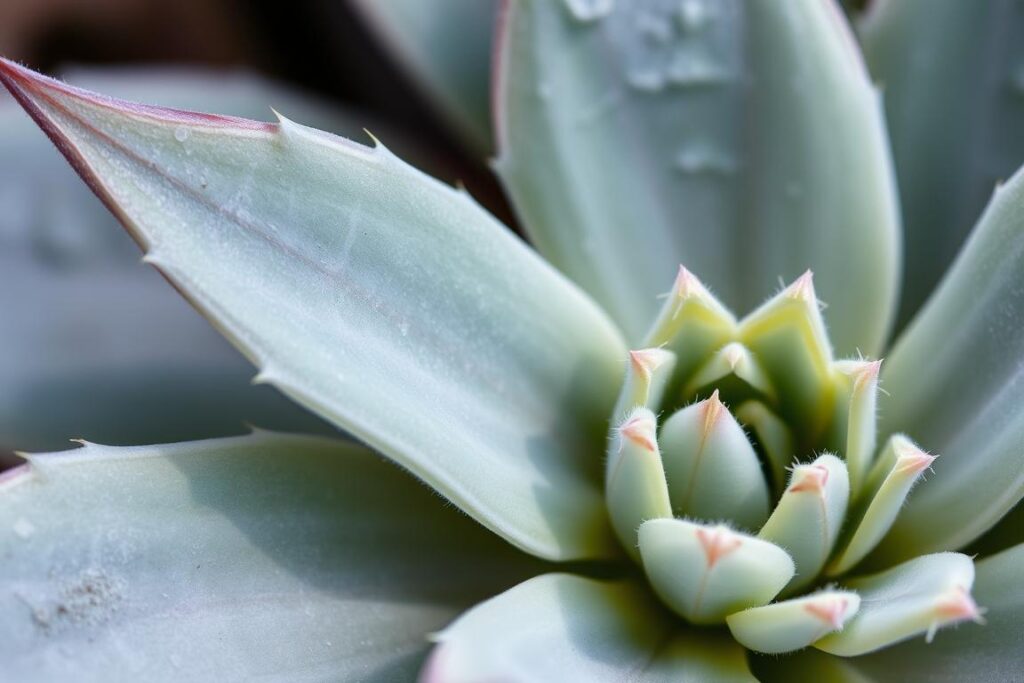
Close examination reveals the specialized adaptations that allow native plants to thrive with minimal water
Behavioral Adaptations
Deepen Your Knowledge of Plant Adaptations
Understanding how plants survive in harsh conditions can transform your approach to sustainable gardening. Our comprehensive guide explores these fascinating adaptations in detail.
Top Native Plants for Arid Regions
The following selections represent some of the most resilient and beautiful native plants adapted to arid conditions across different regions. These species not only survive with minimal water but also provide significant ecological benefits and aesthetic appeal.
Edible Native Plants
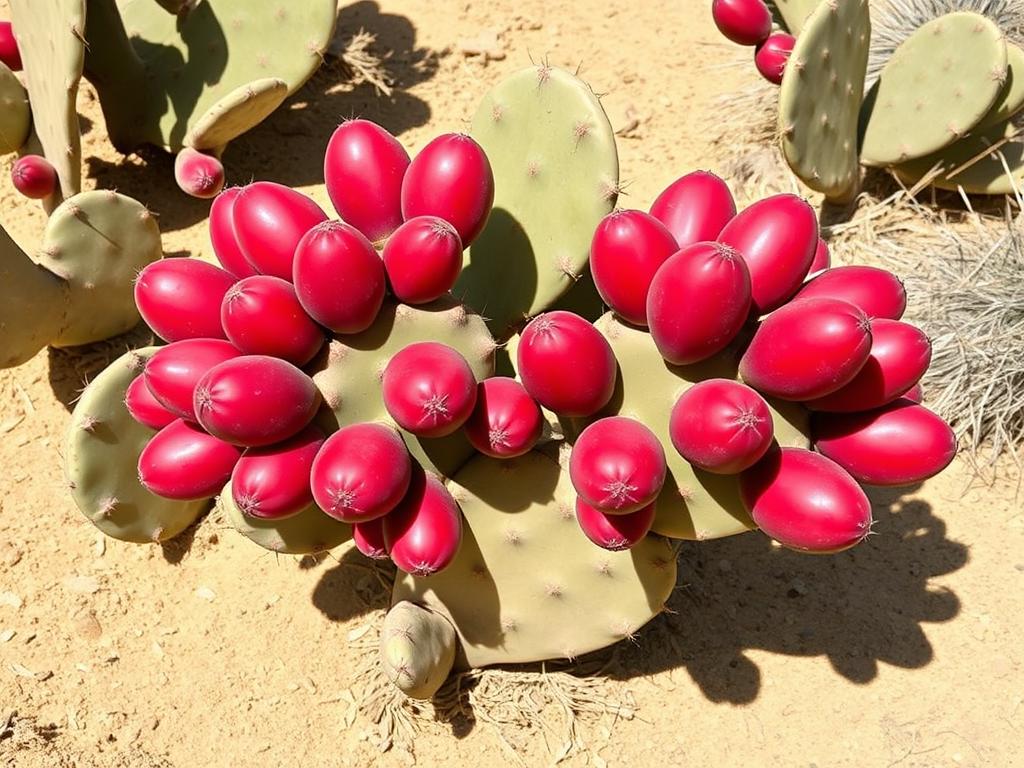
Prickly Pear Cactus (Opuntia spp.)
This iconic desert plant produces edible pads (nopales) and sweet fruits (tunas) rich in vitamins and antioxidants. The shallow but extensive root system efficiently captures rainfall, while the flat pads minimize water loss.
Growing Tips: Plant in well-draining soil in full sun. Requires almost no supplemental water once established. Harvest pads when young and tender, fruits when they develop full color.
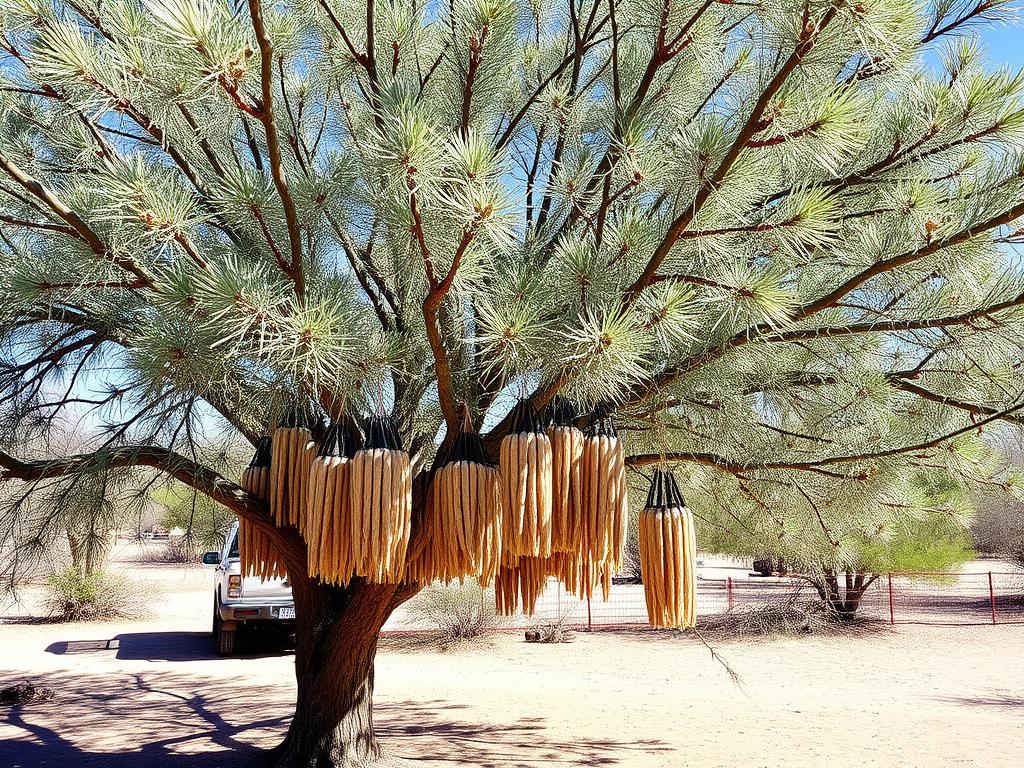
Mesquite (Prosopis spp.)
Mesquite trees produce protein-rich pods that can be ground into nutritious flour. Their extraordinarily deep roots (up to 160 feet) access groundwater, while nitrogen-fixing abilities improve soil fertility around them.
Growing Tips: Plant from seed or container in full sun. Water deeply but infrequently during establishment. Harvest pods when fully dry but before they fall.
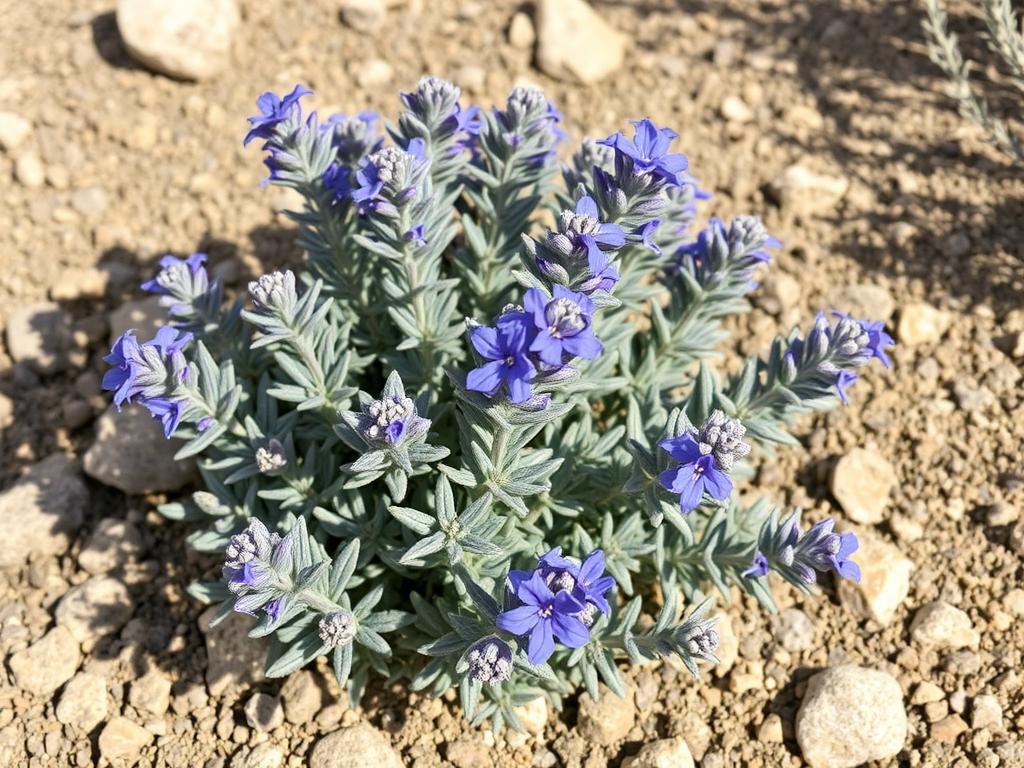
Desert Sage (Salvia dorrii)
This aromatic shrub offers culinary and medicinal applications similar to common sage. Its small, gray leaves reduce water loss, while volatile oils protect against herbivores and extreme temperatures.
Growing Tips: Plant in rocky, well-draining soil in full sun. Extremely drought-tolerant once established. Harvest leaves before flowering for strongest flavor.
Ornamental Native Plants
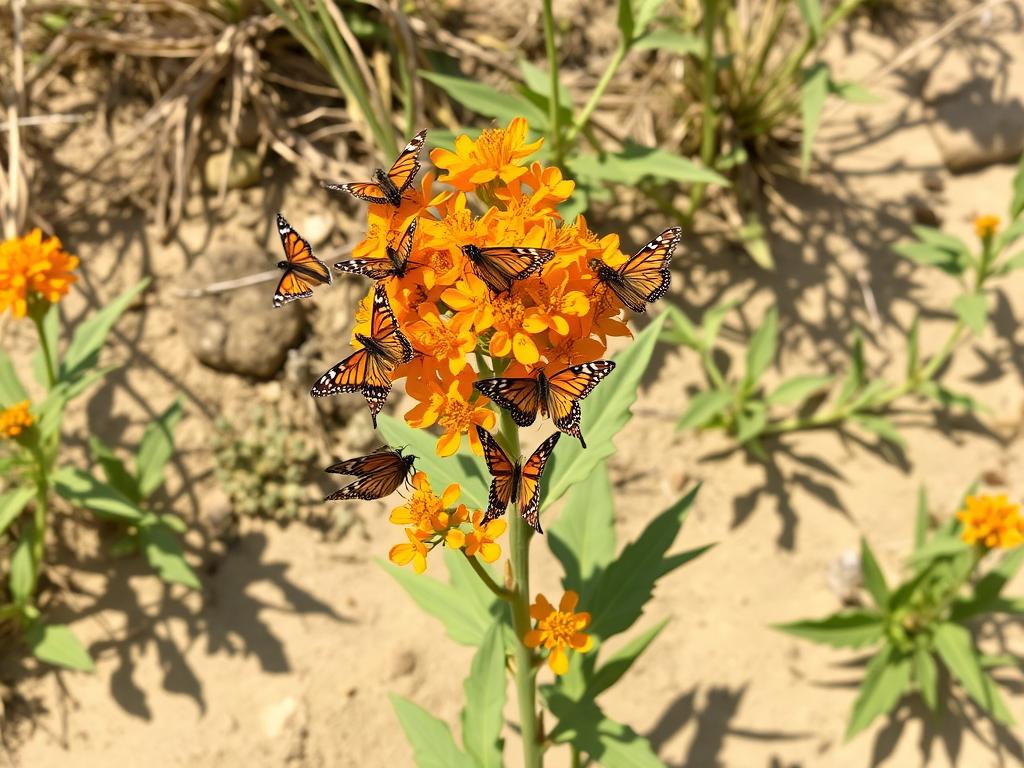
Butterfly Milkweed (Asclepias tuberosa)
This stunning perennial produces clusters of bright orange flowers that attract monarchs and other butterflies. Its deep taproot allows it to thrive in poor, dry soils where many other plants struggle.
Growing Tips: Plant in well-draining soil in full sun. Avoid overwatering, as excess moisture can cause root rot. Cut back after flowering to encourage rebloom.
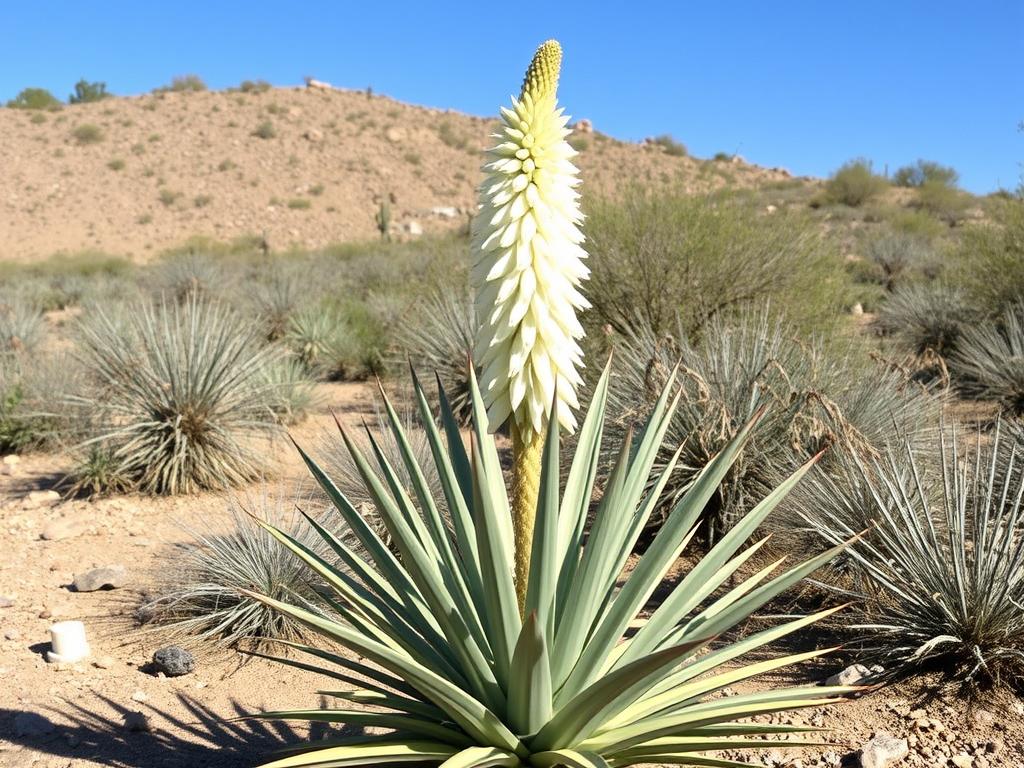
Yucca (Yucca spp.)
These architectural plants feature dramatic flower spikes and distinctive leaf rosettes. Their waxy leaf coating and specialized water storage tissues enable survival during extended droughts.
Growing Tips: Plant in sandy, well-draining soil in full sun. Requires minimal irrigation once established. Remove spent flower stalks to maintain appearance.
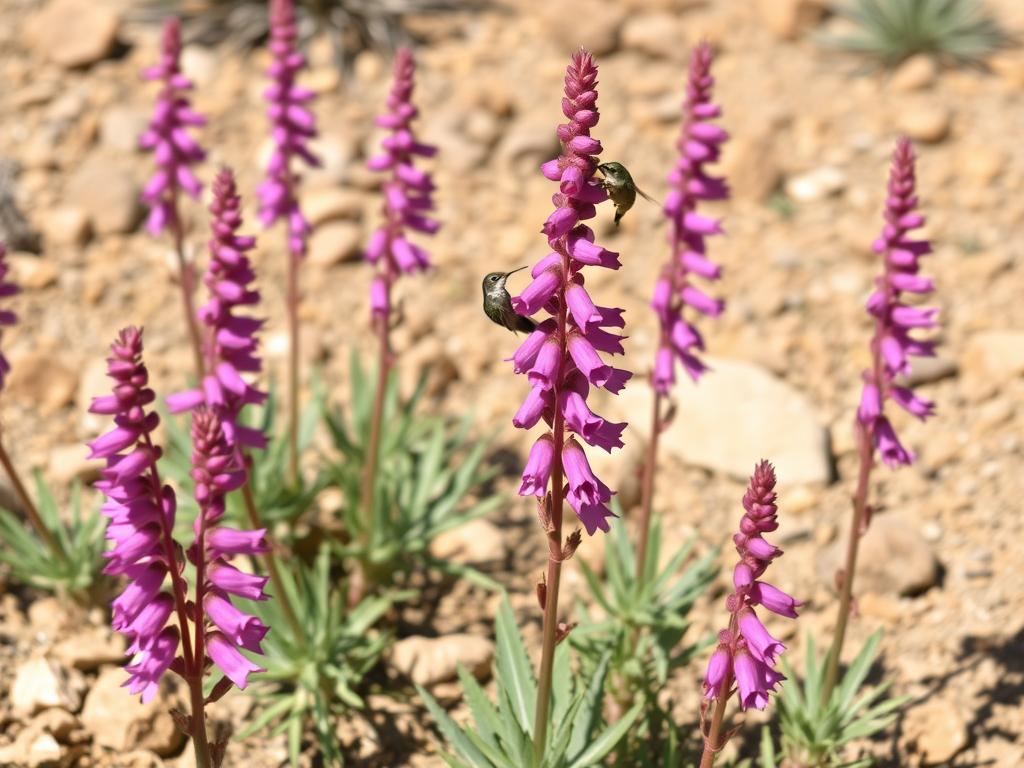
Penstemon (Penstemon spp.)
These wildflowers produce tubular blooms in vibrant colors that attract hummingbirds and native bees. Their compact root systems efficiently utilize limited moisture in rocky or sandy soils.
Growing Tips: Plant in lean, well-draining soil in full sun. Avoid rich soil amendments, which can reduce drought tolerance and flowering. Deadhead to extend bloom time.
Find Native Plants for Your Specific Region
Our regional plant guides provide detailed information about native species specifically adapted to your local climate and soil conditions.
Designing a Water-Smart Native Plant Garden
Creating a successful drought-tolerant landscape requires thoughtful planning that considers both ecological principles and aesthetic goals. The following approach will help you develop a garden that conserves water while providing beauty and habitat value.
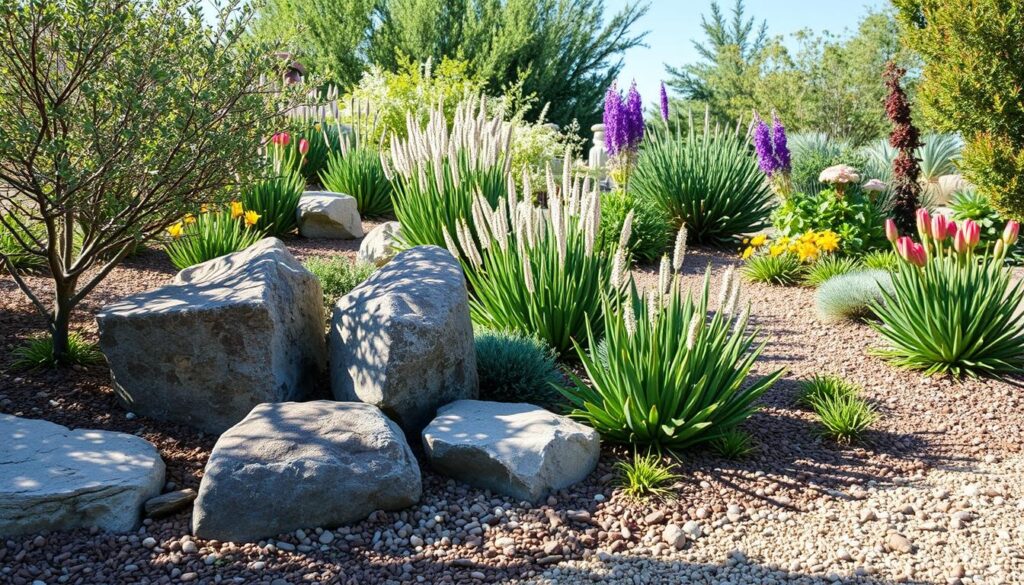
Thoughtful design incorporating hydrozones, proper spacing, and mulch creates a water-efficient landscape
Site Assessment and Planning
Design Principles for Water Conservation
Hydrozone Grouping
Arrange plants with similar water requirements together to prevent overwatering some species while underwatering others. This practice, known as hydrozoning, allows for more efficient irrigation and healthier plants.
Strategic Plant Placement
Position higher water-use plants in naturally moister areas like depressions or shade. Reserve the driest, hottest spots for the most drought-resistant species. Consider mature size to minimize future maintenance.
Incorporate Hardscaping
Integrate non-plant elements like boulders, gravel paths, or dry stream beds to reduce the total planted area while adding visual interest and functionality. These features can also help direct and capture rainwater.
Create Habitat Layers
Include a mix of groundcovers, perennials, shrubs, and trees to mimic natural plant communities. This layered approach provides diverse wildlife habitat while creating visual depth in your landscape.
Installation Best Practices
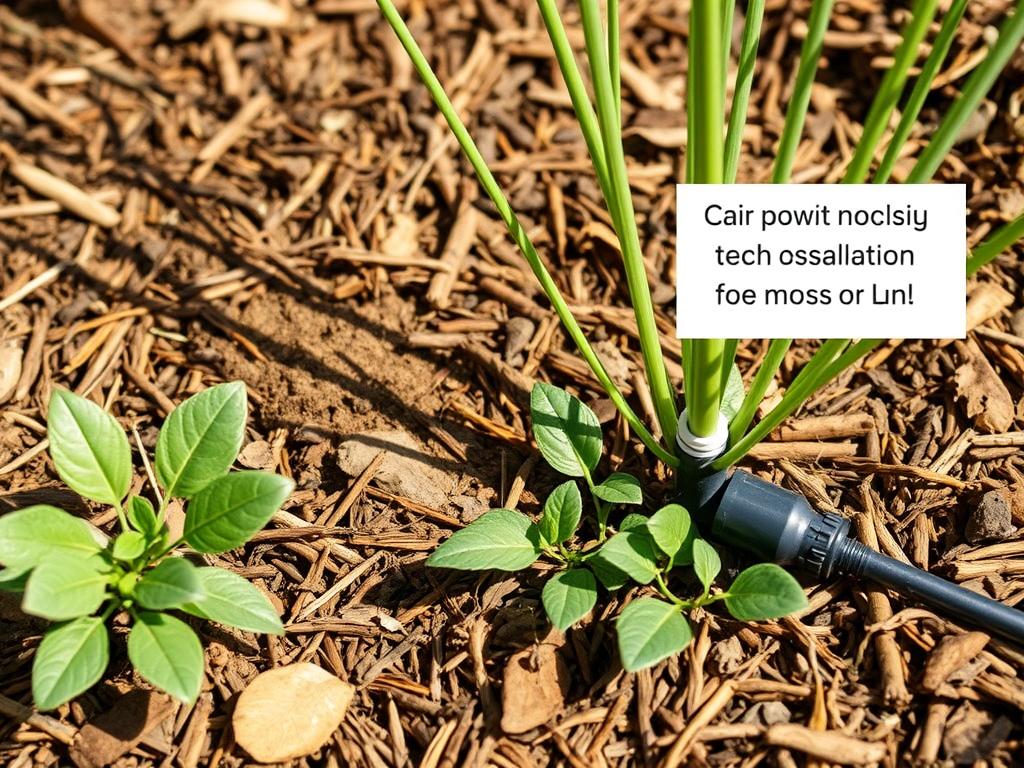
Proper mulching conserves soil moisture while suppressing weeds, reducing maintenance needs
Maintaining Your Native Drought-Tolerant Landscape
One of the greatest benefits of native drought-tolerant landscapes is their reduced maintenance requirements. However, some care is still needed, especially during the establishment period and seasonal transitions.
Establishment Period Care
Seasonal Maintenance

Selective maintenance like deadheading can extend blooming periods while preserving habitat value
Long-Term Sustainability Practices
Case Studies: Successful Native Plant Landscapes
These real-world examples demonstrate how native drought-tolerant plants can be used to create beautiful, functional, and sustainable landscapes in different arid environments.
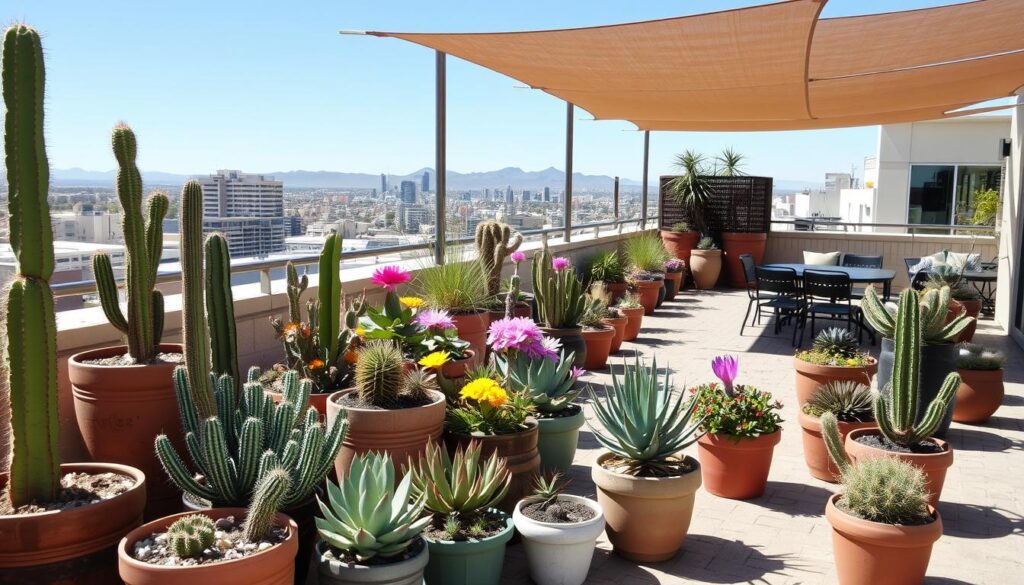
Urban Rooftop Garden in Arizona
When Phoenix resident Maria Gonzalez transformed her 500-square-foot rooftop into a native plant oasis, she faced multiple challenges: extreme heat, weight restrictions, and limited access for maintenance.
Her solution incorporated lightweight containers filled with local cacti, agaves, and wildflowers grouped by water needs. A simple drip irrigation system on a timer delivers minimal water precisely where needed. Shade sails protect more sensitive plants during the hottest hours.
Three years after installation, the garden requires just 20% of the water used in a conventional landscape of the same size. The space now serves as habitat for hummingbirds, native bees, and butterflies while providing Maria with a comfortable outdoor living area even during summer months.

Community Garden in Andalusia, Spain
The village of San Miguel faced severe water restrictions after three consecutive drought years. Rather than abandoning their community garden tradition, residents collaborated with local ecologists to reimagine the space using Mediterranean native plants.
They replaced water-intensive crops with drought-adapted edibles like rosemary, thyme, and olive trees. Rainwater harvesting systems capture the limited seasonal rainfall, while traditional dry-farming techniques maximize production with minimal irrigation.
The transformed garden now serves as both a food source and educational center, demonstrating how traditional ecological knowledge combined with native plant selection can create resilient food systems even in increasingly arid conditions. Annual water use has decreased by 65%, while community participation has doubled.
Share Your Native Plant Success Story
Have you created a successful drought-tolerant garden using native plants? We’d love to feature your project and share your insights with our community.
Resources for Native Plant Gardening
These organizations, tools, and references can help you find appropriate native plants for your region and learn more about sustainable gardening practices in arid environments.
Regional Plant Databases
Books and Publications
Local Resources
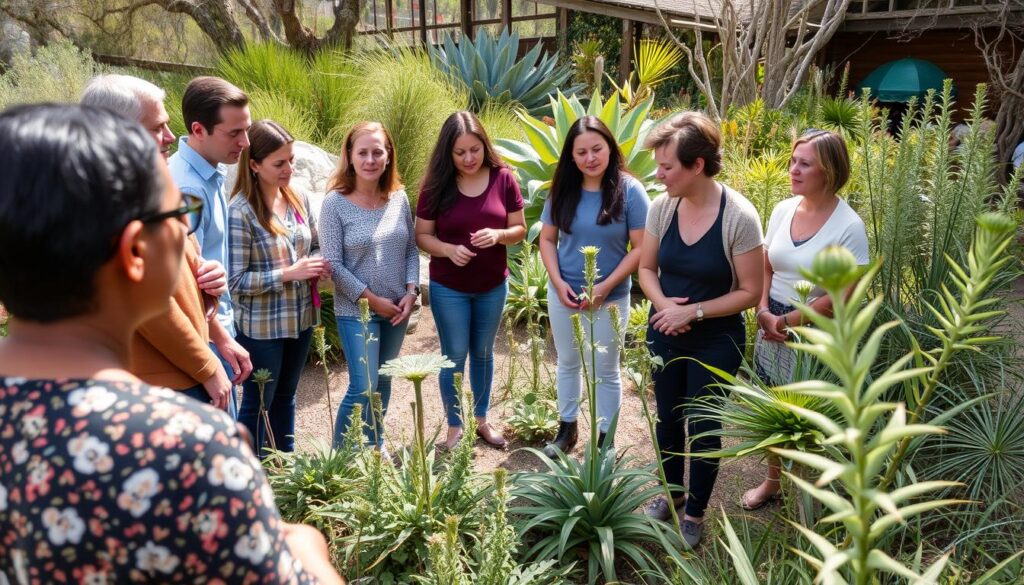
Local workshops and classes provide hands-on learning opportunities for native plant gardening
Embracing Native Plants for a Sustainable Future
As we face increasing climate uncertainty and water scarcity challenges, native drought-tolerant plants offer a path forward that honors both ecological wisdom and human needs. By working with nature’s adaptations rather than against them, we can create landscapes that thrive with minimal resources while supporting the web of life around us.
The journey toward a more sustainable garden doesn’t require radical transformation overnight. Even small changes—replacing a portion of your lawn with native groundcovers or adding a few indigenous flowering plants to your existing beds—can make a meaningful difference. Over time, these incremental shifts can transform not only your landscape but also your relationship with the natural world.
Remember that each native plant you add to your garden represents thousands of years of evolutionary wisdom—a living solution to the challenge of thriving in challenging conditions. By embracing these botanical teachers, we not only create more beautiful and resilient spaces but also contribute to the larger work of ecological restoration and climate resilience in our communities.
Make a Commitment to Sustainability
Join thousands of gardeners pledging to incorporate more native plants into their landscapes. Every square foot converted to native habitat makes a difference for local ecosystems.
Will is a vertical gardening enthusiast and sustainable cultivation specialist with a passion for helping people grow fresh food in small spaces and dry climates. With years of hands-on experience testing smart irrigation systems, optimizing urban gardens, and exploring eco-friendly solutions, this author shares clear, practical tips to turn any corner into a productive garden. Whether on a sunny balcony or in a compact backyard, Will helps readers save water, maximize space, and enjoy healthy harvests year-round. When not tending to his plants, you’ll find him sipping herbal tea and sketching ideas for new sustainable projects.

